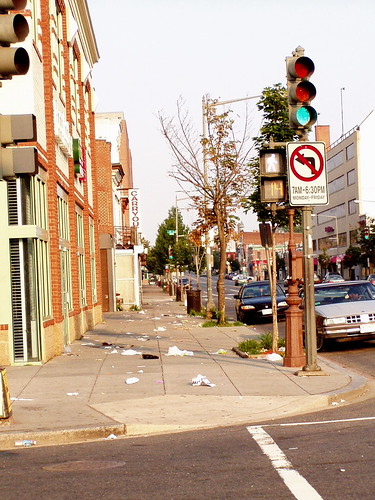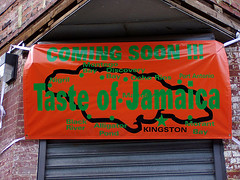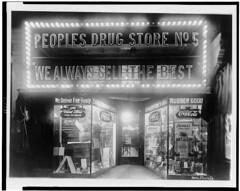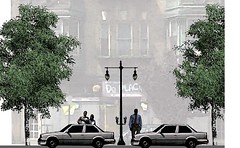Reader comment on perceptions of quality (reprinted from last August)
___________________
This is a blog entry from last August, and it seems particularly relevant to the community discussion going on in the wake of the Board of Zoning Adjustment decision about whether or not (they decided not) Cluck U on the 1100 block of H Street NE should be considered a fast food restaurant under the Zoning regulations.
___________________
From August 5th, 2005:
This was a comment to the entry "Falling up -- Accountability and DC Community Development Corporations" from last month, which I cited in today's entry on "Office buildings won't "save" Anacostia."
The points the writer made are relevant to just about every development issue in the city and is why I always say that we need a basic grounding in urban design, the L'Enfant Plan, etc., to understand these issues going forward. (E.g., at the Comprehensive Plan Citizens Task Force meeting this past Tuesday night, they received a few minute presentation on urban design. As I said to someone the next day, "Why didn't they get a whole session on this at their very first meeting?")
Or as Graham Allison says in the book Essence of Decision, "where you stand depends on where you sit."
From an anonymous writer-reader:
Why? Well look who's heading up the CDCs in San Francisco vs D.C. There are some fundamental differences here related to value systems and quality of life perceptions. This is like asking why my dog can't use the toilet and flush like I do. This would clearly benefit the whole household, but he is simply not capable of creating an enhanced quality of life for the rest of us in the house. It should be noted, however, this does not make him a bad dog, he's a great dog in fact. If I want everyone in my household to use the toilet, then I would have to get rid of my dog.
Also, take a look at where the H Street CDC people live. None of them live in places with what you and I would consider smart development. How can you expect them to understand the value and merits of something like a mixed use structure for our community when they don't value this on a personal level.
 Some current conditions. Photo by Elise Bernard.
Some current conditions. Photo by Elise Bernard.Can they expect us to understand and value and the merits of suburban spawl or run down corridors?! ...just as my dog doesn't understand the value of indoor plumbing; trying to change his mind would be an excercise in futility.
On that same note, I read that the owner of Taste of Jamaica didn't understand how ordering through a little hole in a glass wall decreased a patrons dining experience!! He might remove the glass to appease, but he would still not understand why this should make a difference.
 Photo by Elise Bernard.
Photo by Elise Bernard. Photo from the Library of Congress, 802 H Street, probably in the 1930s.
Photo from the Library of Congress, 802 H Street, probably in the 1930s.The revitalization of H street is an uphill struggle for everyone involved because from leaders to neighbors (all good people, for the most part), we have some completely diametrical opposite ingrained belief systems related to smart development, good restaurants/businesses, littering, drug dealing/use, public urination, law enforcement, etc.
 Rendering by the Michael Baker Corporation for the H Street Transportation and Streetscape Study.
Rendering by the Michael Baker Corporation for the H Street Transportation and Streetscape Study.Index Keywords: contested-spaces; retail



0 Comments:
Post a Comment
<< Home